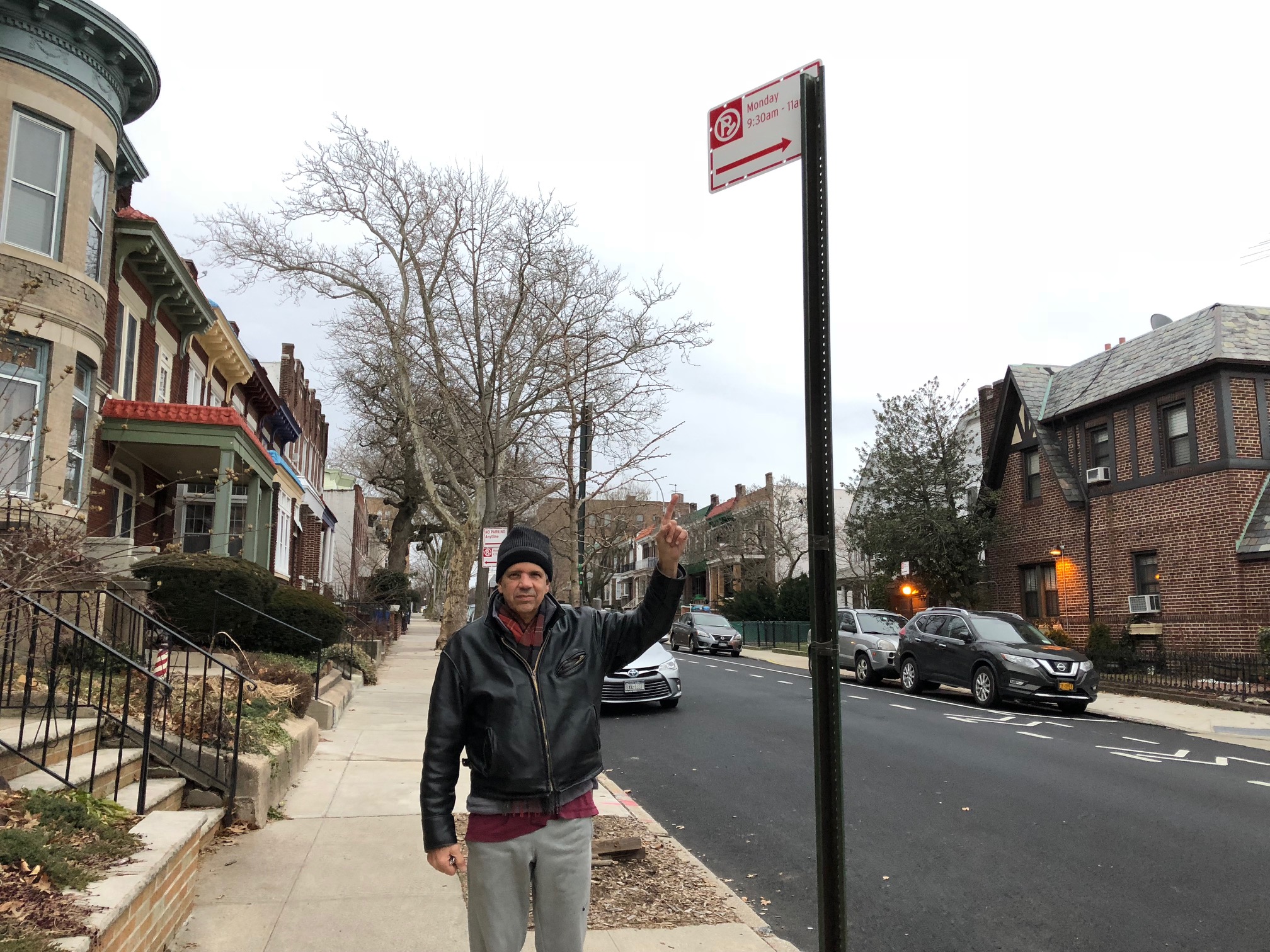City removes parking signs, drivers get headaches

Bay Ridge resident Michael Jaguar points to an Alternate Side parking regulation sign on 68th Street. There had been a No Parking sign on the same pole, but, Jaguar said, it was removed. Eagle photo by Paula Katinas
It’s hard enough to find a parking space in Brooklyn as it is, but when the Department of Transportation removes parking regulation signs from streets, the result is confusion and head-shaking, according to frustrated Bay Ridge residents.
Locals say they’re having trouble deciphering the city’s byzantine parking regulations because of the absence of signs, particularly signs that used to indicate the boundaries of No Parking zones.
And the result of all that confusion is parking tickets — lots of them, according to Michael Jaguar, a lifelong resident of Bay Ridge.
